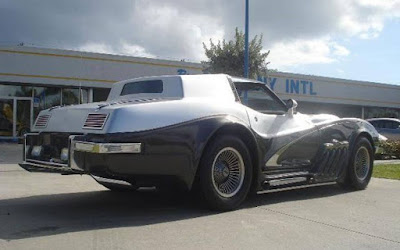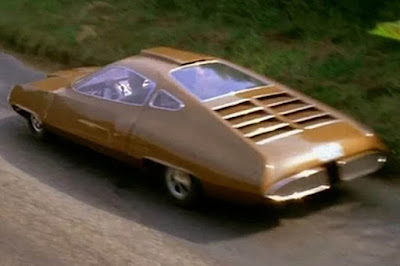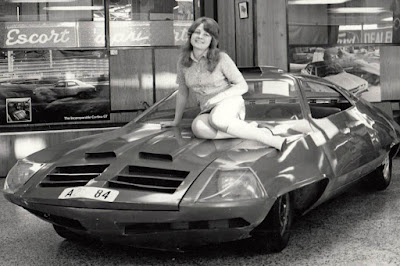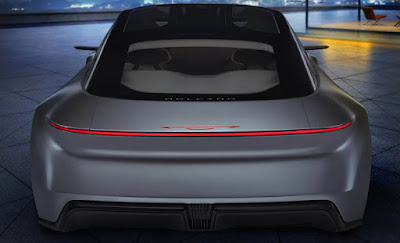Unique ONES - The allure of the Corvette, a name synonymous with American muscle, has captivated enthusiasts for decades. Regrettably, the once-exclusive charm of this iconic sports car seems to be waning, with some dismissing it as a mere participant in the fiberglass sports car arena. As we delve into the late 1970s, potential Corvette owners seeking to stand out found themselves resorting to importing Lamborghinis or DeTomasos.
 |
| Les Dunham crafted the Corvette Caballista, responding to fans' desire to revive the exclusive charm of this iconic sports car. (Picture from: Autoweek) |
Recognizing this growing dilemma, Les Dunham, founder of the Dunham Coach Motor Car Company in Boonton, N.J., took it upon himself to remedy the situation. A customization maestro since 1957, Dunham became widely known after transforming a Chevrolet Corvette chassis by fitting it with a Cadillac Eldorado body. The result? The birth of the Corvorado (Corvette + Eldorado), prominently featured in James Bond's "Live And Let Die," among other films.
 |
| Meticulously from 1977 to 1982, Les Dunham converted ordinary Corvettes into the stunning Corvette Caballista—producing 50 units, with only 5 convertibles. (Picture from: Autoweek) |
Between 1977 and 1982, Dunham meticulously converted ordinary Corvette into the stunning Corvette Caballista. To ensure exclusivity, only 50 units were produced, with a mere five being convertibles. The Corvette Caballista, crafted in Boonton, NJ, carried a hefty starting price of over $60,000 in 1980, reinforcing its exclusive status.
 |
| The Corvette Caballista arrived fully loaded, boasting a leather interior, grey carpet, air conditioning, tilt and telescopic compact steering wheel, and various other premium features. (Picture from: Hemmings) |
The term "Caballista" itself, a Spanish word meaning "horse-man" or one knowledgeable about horses, was aptly chosen. Equipped with Chevy's 5.7 Liter L-83 V8 and a 700 R4 automatic transmission, owners of the Caballista became instant connoisseurs of "200 horses" and 285 ft-lbs of torque.
 |
| The Corvette Caballista features Chevy's 5.7 Liter L-83 V8 and a 700 R4 automatic transmission, delivering 200 horses and 285 ft-lbs of torque. (Picture from: Hemmings) |
The feature-rich Caballista boasted 4-wheel power disc brakes, power steering, power windows and seats, a tilt and telescopic steering wheel, AM/FM cassette, a 2-tone leather interior, tinted windows, removable mirror T-Top, custom silver paint with charcoal accents, and distinctive elements like full chrome bumpers, side supercharger pipes (purely for show), a Rolls-style grille, and mag rims.
 |
| The Corvette Caballista is adorned with unique features, including full chrome bumpers, side supercharger pipes (for display), a Rolls-style grille, and stylish mag rims.. (Picture from: Autoweek) |
Undoubtedly, this car turned heads with its unique design, reflective of a bygone era. The late '70s saw it making appearances in films like "Shaft," gracing the entrances of legendary discos like Studio 54, and becoming the vehicle of choice for the flamboyant pimps of that time, akin to the spiritual ancestors of today's Escalade and Bentley.
 In conclusion, Dunham's Corvette Caballista stands as a testament to the creativity that arises from the need for exclusivity. This automotive gem not only revitalized the Corvette's allure but also etched its name in the annals of unique and extravagant customizations in automotive history. *** [EKA | FROM VARIOUS SOURCES | DUNHAM COACH | HEMMINGS | CARTHROTTLE | AUTOWEEK ]
In conclusion, Dunham's Corvette Caballista stands as a testament to the creativity that arises from the need for exclusivity. This automotive gem not only revitalized the Corvette's allure but also etched its name in the annals of unique and extravagant customizations in automotive history. *** [EKA | FROM VARIOUS SOURCES | DUNHAM COACH | HEMMINGS | CARTHROTTLE | AUTOWEEK ]Note: This blog can be accessed via your smart phone.







































